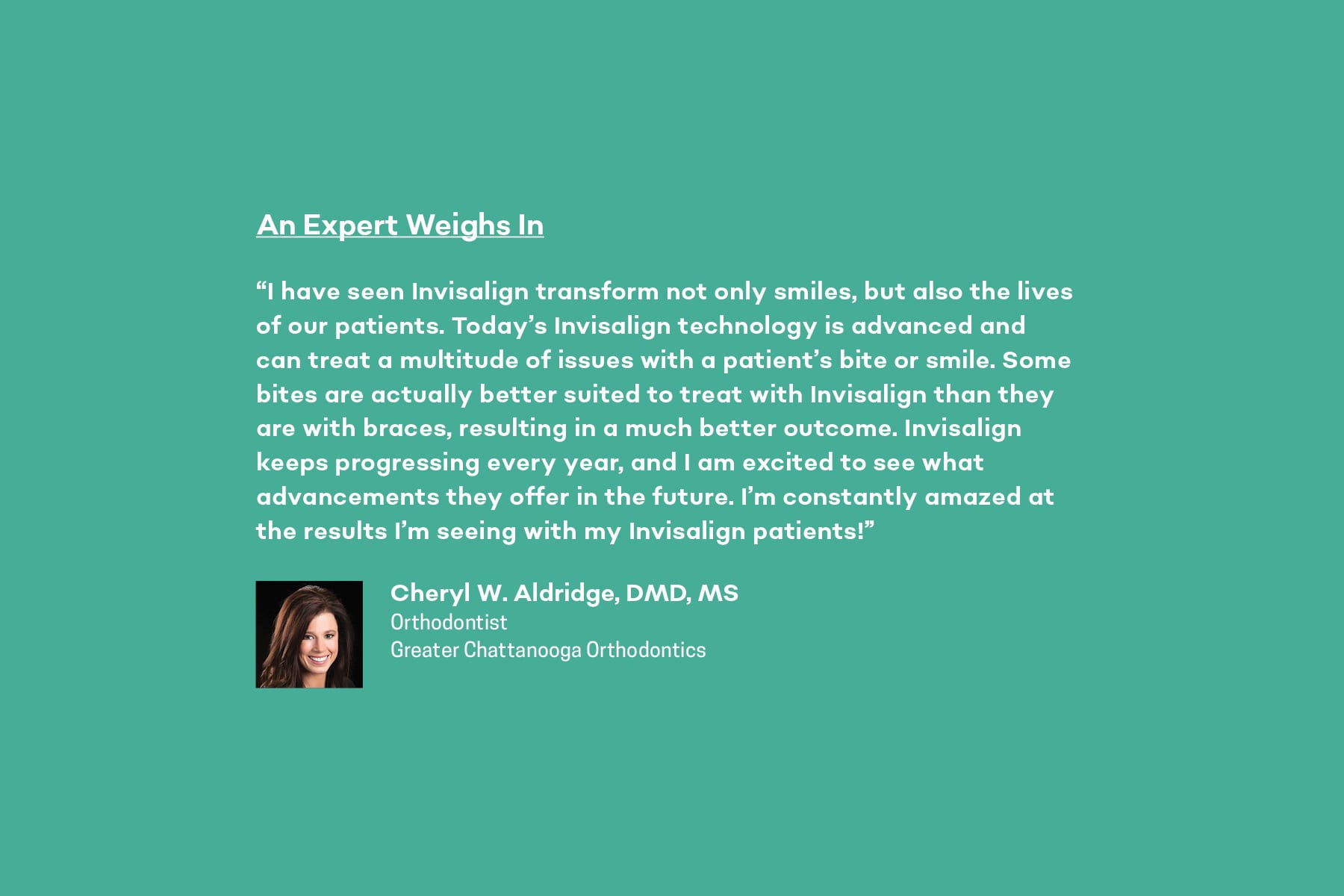Annual Oral Health Section
Invisalign clear aligners are an excellent alternative to braces for those in search of a more discreet option for straightening their teeth.
Wanting a straighter, more properly aligned smile is incredibly common. For some, misaligned teeth can even go so far as to hurt their self-esteem and prevent them from smiling in social situations. Previously, braces were the primary solution to this. However, Invisalign can achieve the same goals that traditional braces strive for without the discomfort, inconvenience, and disruptive appearance of braces.
How Does Invisalign Work?
The first step toward straighter teeth with Invisalign is a consultation with your orthodontist. At the office, a 3D digital scan will be taken of your mouth and then evaluated in order for a treatment plan to be laid out for you. From this scan, your orthodontist will also do a simulation of what your teeth could look like after your Invisalign treatment is complete. Following this, your custom aligners will be ordered, and your orthodontist will examine the first set while it’s on your teeth to ensure that the fit is correct. After your appointment, you’ll visit with your orthodontist periodically so that they can monitor your progress. Once your teeth have been fully re-aligned, you’ll be fitted with retainers to maintain your new smile.
Who Is a Good Candidate?
Invisalign is a great option for a wide variety of candidates, including anyone experiencing the following:
- Overbite
- Underbite
- Crossbite
- Open bite
- Gapped teeth
- Crowded teeth
There are also Invisalign options for younger people who still have a mix of baby and permanent teeth but need correction or prevention for existing or developing bite issues.
What Are the Benefits?
There are many benefits for Invisalign when comparing them to traditional braces. They’re more comfortable in the mouth and are easily removable when it’s time to eat or brush your teeth. They’re also much more discreet than the braces that are attached to the front of your teeth and can achieve results in as little as six months.


